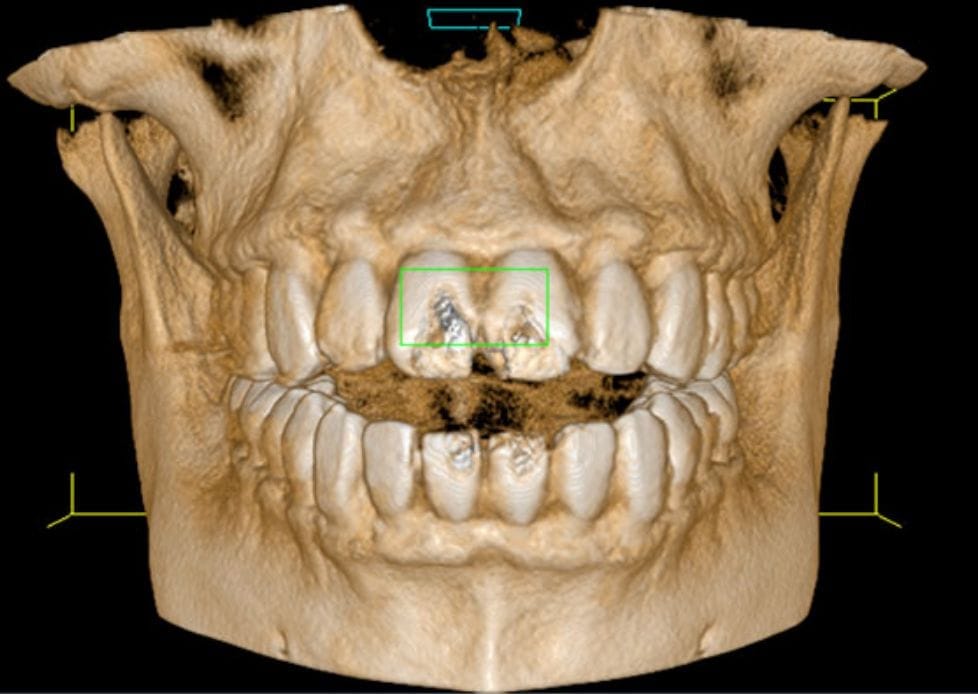
Panoramic radiography (technically known as orthopantomography) is a radiographic technique that allows having an image of the teeth, the dental arches, and the mandibular and maxillary bones, on a single radiographic film. By consulting these images, the dentist will be able to evaluate the alignment of the arches and identify any cavities that may have escaped visual examination. For this reason, the dental panoramic with CBCT can be considered a first-level exam, useful to obtain a general overview of the state of health of the stomatognathic apparatus, in order to formulate a correct diagnosis and to define the most appropriate therapeutic approach.
The dental panoramic is not painful and does not require any specific preparation by the patient. As for women who are actually or even only presumed to be pregnant, they must inform the operator, who in that case will adopt the necessary precautions.
Teleradiography is a very important diagnostic exam in orthodontics because it allows for precise measurements of the skull, its structure, and its characteristics (cephalometric analysis). Through this exam, it is possible to understand if the position of the dental arches is correct and if the teeth are in the correct position relative to the bones.
This exam allows for a precise reexamination of some data collected with the objective exam and also for comparison with the skeletal structures of the maxillary bases and other bones of the skull. The periodic comparison of subsequent exams will provide useful information on the type of growth of the patient and the changes acquired from orthodontic therapy.